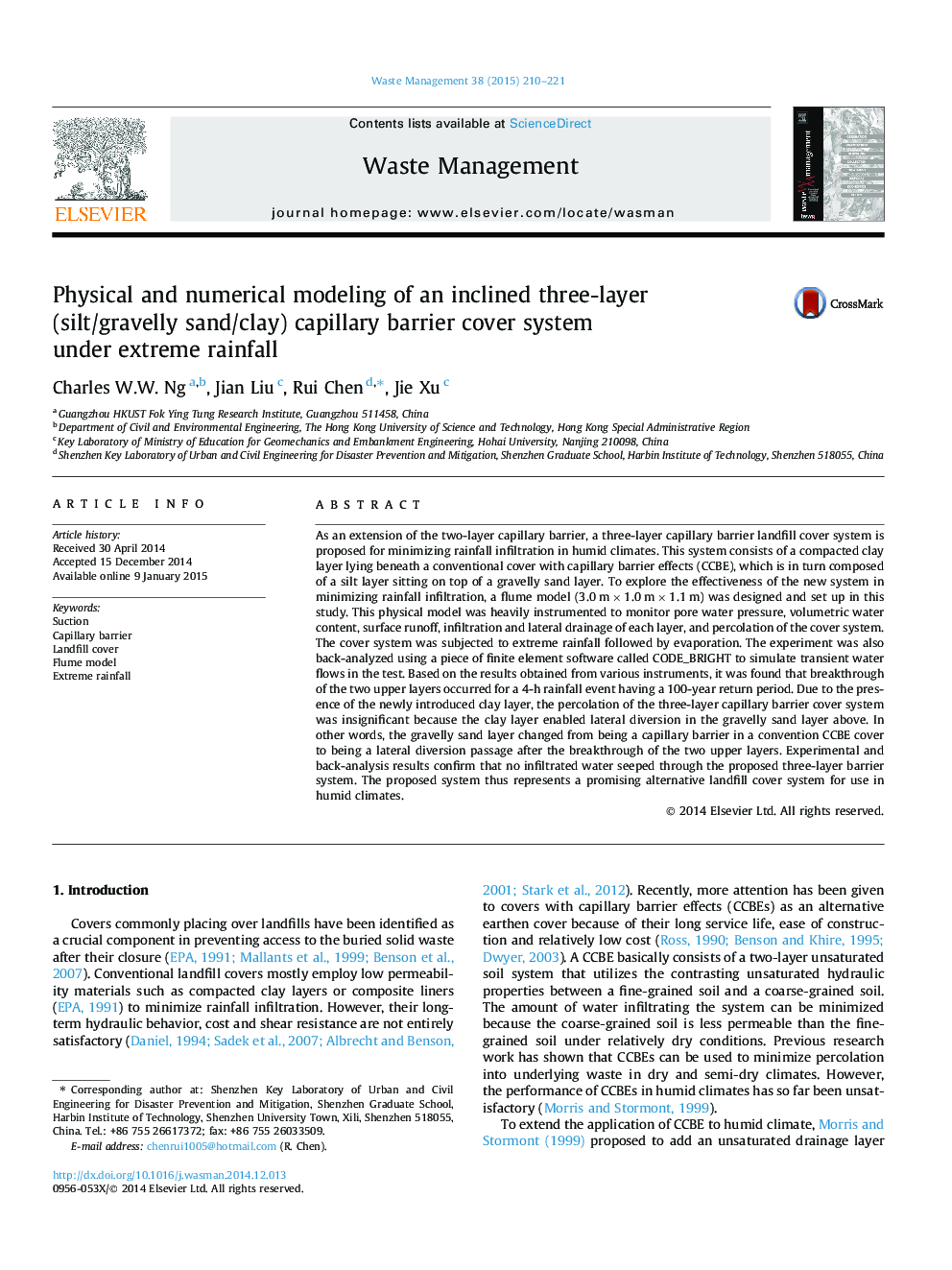| Article ID | Journal | Published Year | Pages | File Type |
|---|---|---|---|---|
| 4471407 | Waste Management | 2015 | 12 Pages |
•New 3-layer capillary barrier cover system performs well in humid climate.•Flume model test and FEM simulation were conducted.•The lowest clay layer plays an important role.
As an extension of the two-layer capillary barrier, a three-layer capillary barrier landfill cover system is proposed for minimizing rainfall infiltration in humid climates. This system consists of a compacted clay layer lying beneath a conventional cover with capillary barrier effects (CCBE), which is in turn composed of a silt layer sitting on top of a gravelly sand layer. To explore the effectiveness of the new system in minimizing rainfall infiltration, a flume model (3.0 m × 1.0 m × 1.1 m) was designed and set up in this study. This physical model was heavily instrumented to monitor pore water pressure, volumetric water content, surface runoff, infiltration and lateral drainage of each layer, and percolation of the cover system. The cover system was subjected to extreme rainfall followed by evaporation. The experiment was also back-analyzed using a piece of finite element software called CODE_BRIGHT to simulate transient water flows in the test. Based on the results obtained from various instruments, it was found that breakthrough of the two upper layers occurred for a 4-h rainfall event having a 100-year return period. Due to the presence of the newly introduced clay layer, the percolation of the three-layer capillary barrier cover system was insignificant because the clay layer enabled lateral diversion in the gravelly sand layer above. In other words, the gravelly sand layer changed from being a capillary barrier in a convention CCBE cover to being a lateral diversion passage after the breakthrough of the two upper layers. Experimental and back-analysis results confirm that no infiltrated water seeped through the proposed three-layer barrier system. The proposed system thus represents a promising alternative landfill cover system for use in humid climates.
